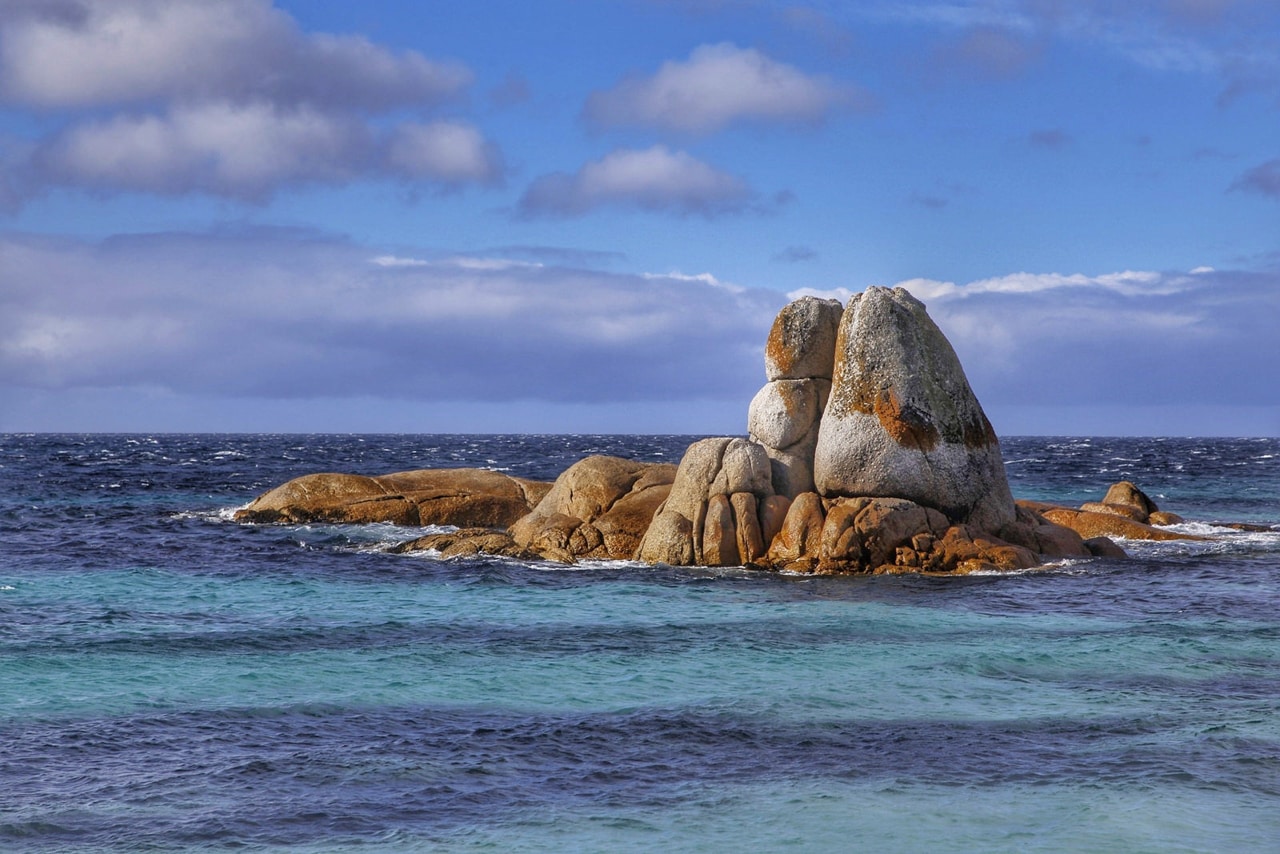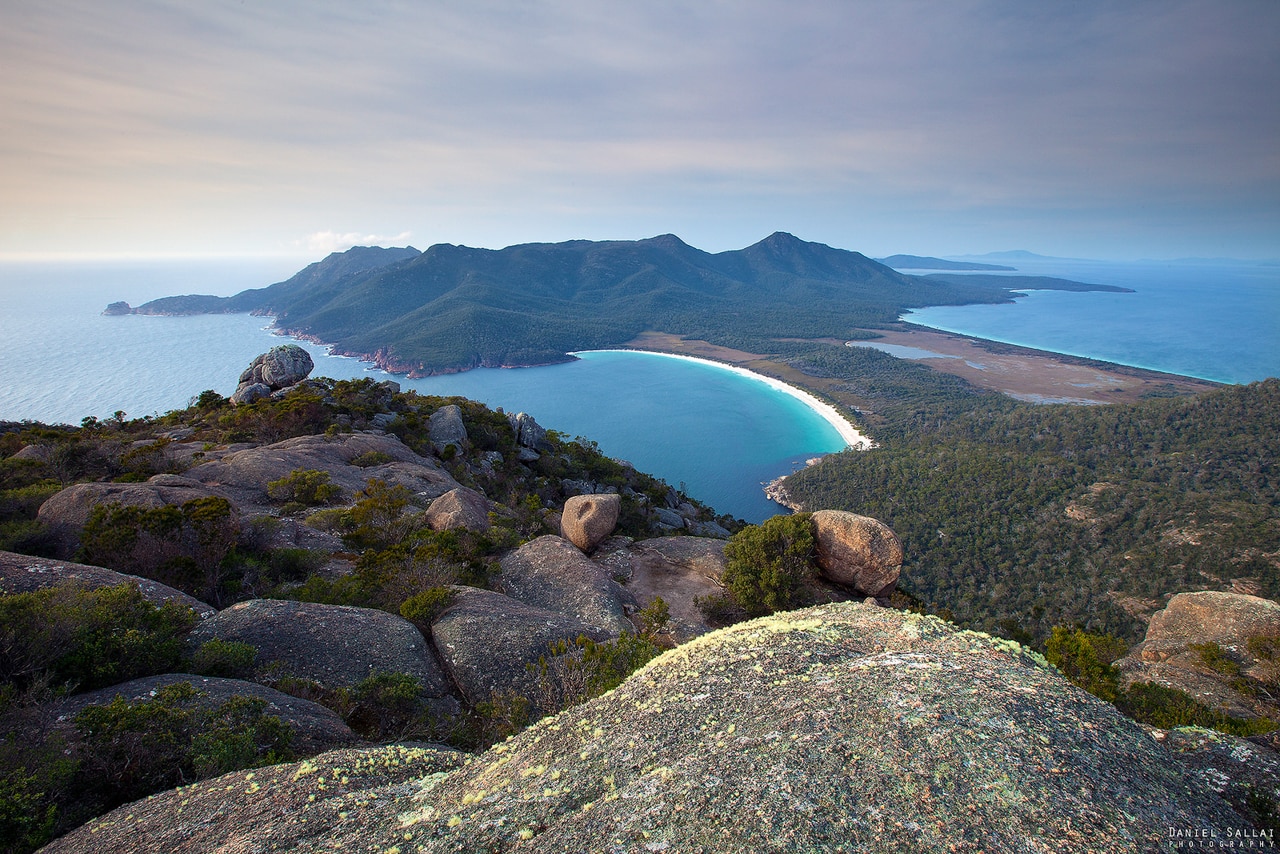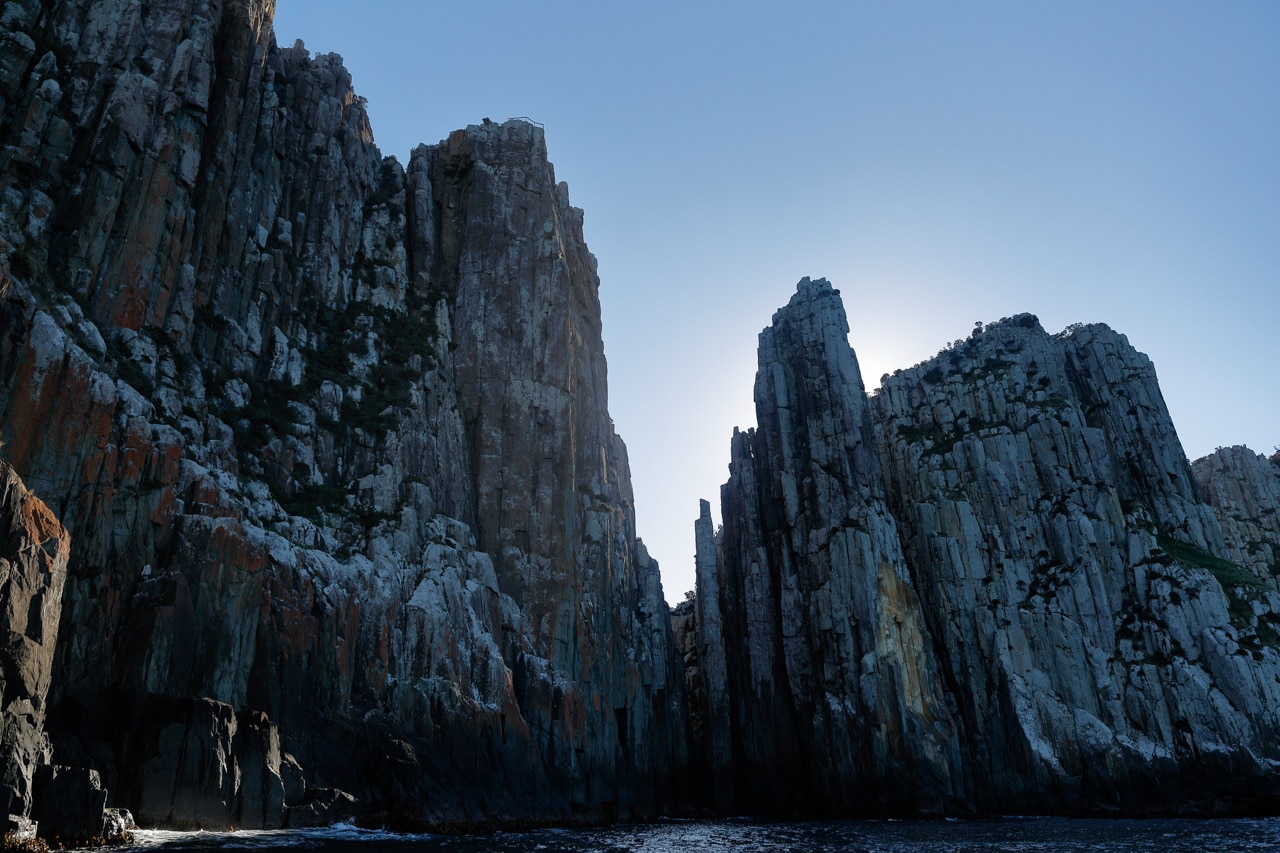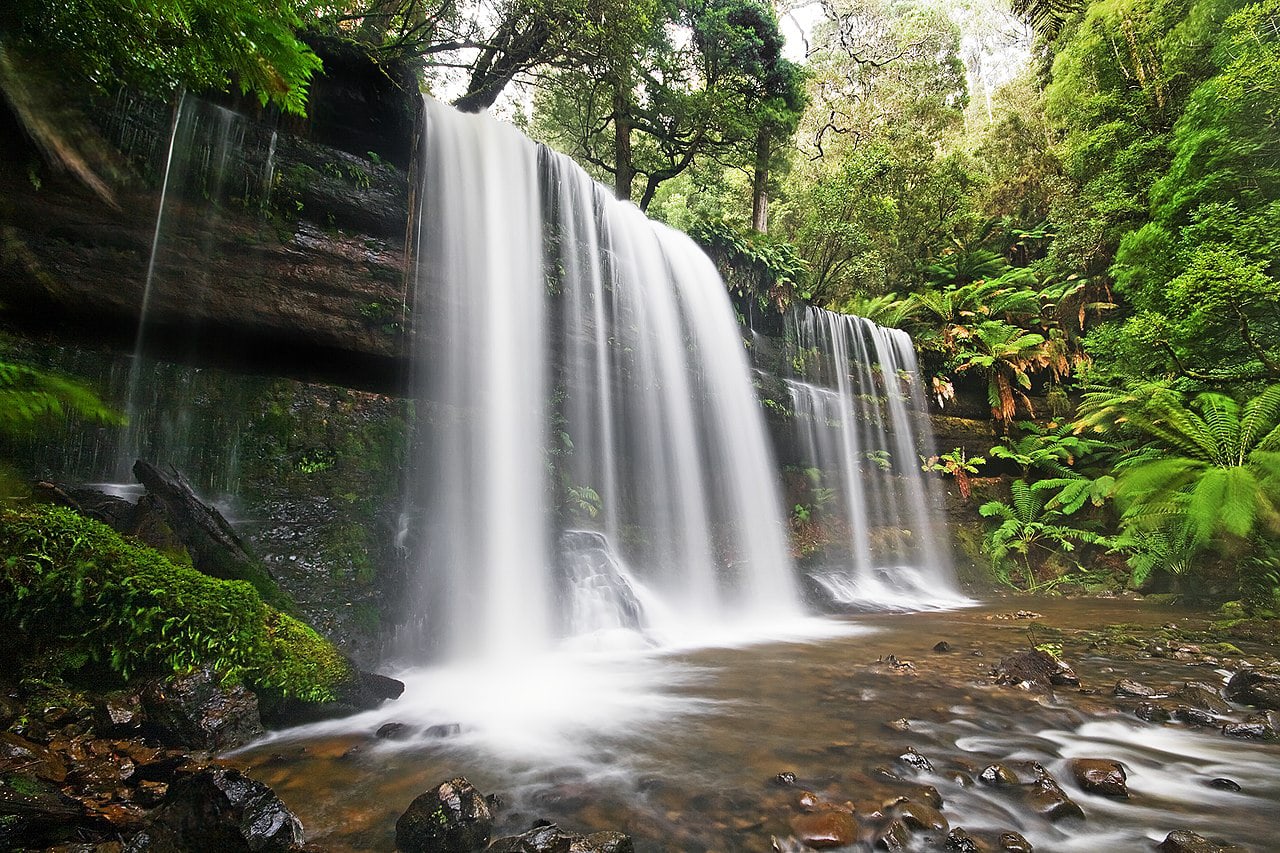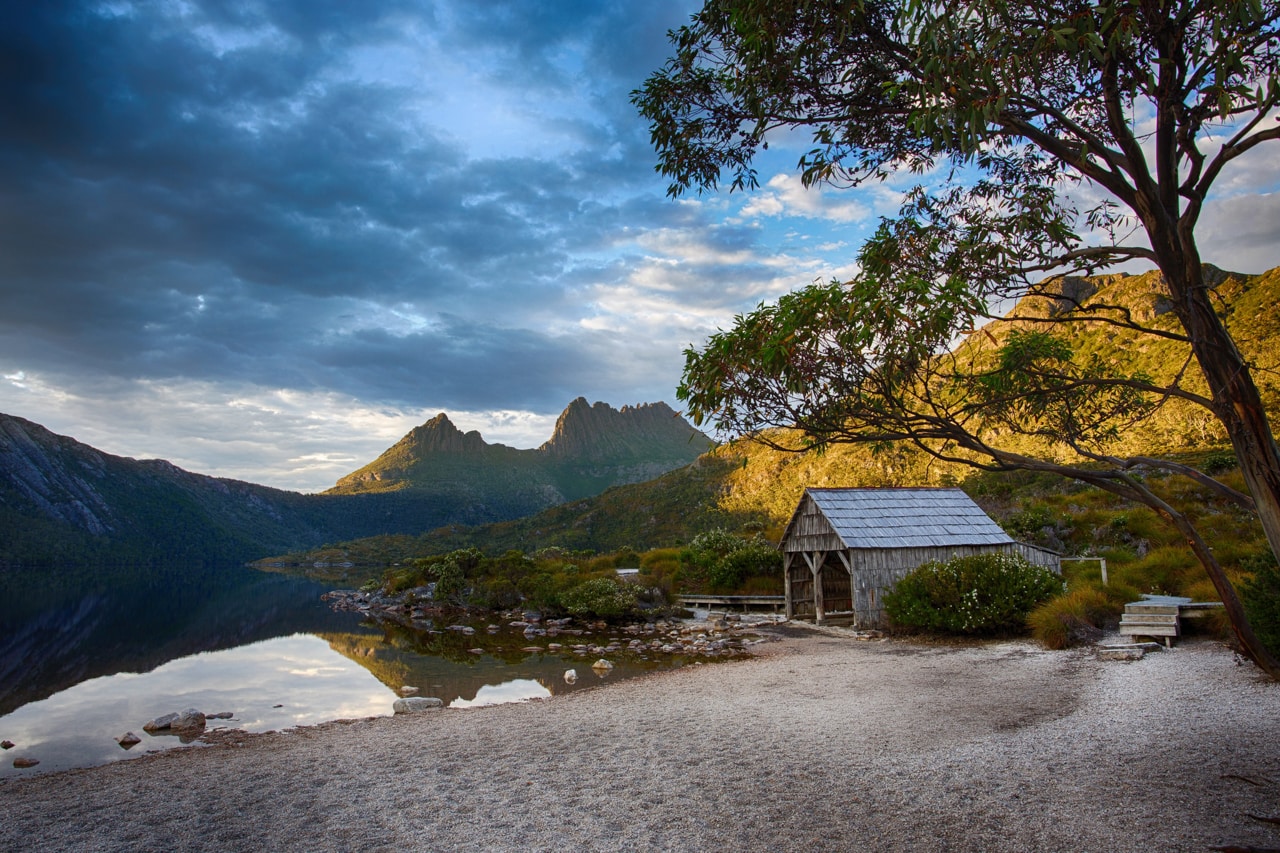Posts on this site may contain affiliate links. This means that whenever you buy or book something through those links, we may earn a small commission – without any extra cost to you at all! You can read more about our Terms of Use / Disclosure here.
Although it may look small, dwarfed by the Australian mainland, Tasmania is actually a pretty large island. Only 25 islands in the world are bigger in size. And what’s more, over 40% of its surface area is protected, including a huge UNESCO World Heritage Site, wilderness areas, and no fewer than nineteen Tasmania national parks.
This makes Tasmania one of the most protected regions on earth. Conservation and ecological awareness are nothing short of a Tasmanian mindset and characteristic. The island is, for example, the first place where a “green” political party ever ran a campaign. In 1972, that was.
Contents
Diversity, Wildness and Beauty
Tasmania, unlike most of the rest of Australia, consists of lush and often impenetrable (rain) forests and dolerite and quartzite mountains. Covered in lush forests, featuring countless waterfalls, glacial lakes and vast wilderness areas, home to unique wildlife, and crossed by towering mountain ranges, Tasmania is as wild as a place can get. It’s extremely rugged and breathtakingly gorgeous.
I talk a lot about American national parks on this blog—95% of the national parks content has been about them—, but it’s time I cover some in the rest of the world as well. In fact, I visited numerous national parks in Tasmania, and the rest of Australia, in 2010-2011. That was years before I went to my first one in the U.S. (which was Acadia National Park).
5 Spectacular Tasmania National Parks
During my two-week road trip in Tasmania, I visited a handful of stunning national parks. The road network is laid out perfectly for road tripping, its main highway basically looping around the island and passing by many of its greatest destinations. If you—like I did—arrive in Tasmania by ferry from Melbourne, you’ll start your loop drive in the port town of Devonport.
You can rent a car in Melbourne or in Devonport. Driving in a clockwise direction, you’ll come across the following five Tasmania national parks. They’re my absolute favorites, and although there are fourteen other parks to explore, I suggest that you start with these. They’re among the most iconic and spectacular, in addition to being very accessible as well, which isn’t the case for several other Tasmanian parks.
If you’re visiting multiple national parks in Tasmania, I recommend that you get yourself a national parks pass. A variety of passes is available for purchase at visitor centers, the Spirit of Tasmania and on the Tasmania Parks and Wildlife Service website.
Picnic Rocks, Mount William National Parks – Photo by Steve Bittinger (CC BY 2.0)
1. Mount William National Park
Hidden in the far northeastern corner of the island, Mount William National Park may be a bit off the beaten track, but is worth the detour. Because of its wide variety in animal and plant life, it’s one of Tasmania’s most significant conservation areas.
Spring and summer wildflowers set the meadows ablaze while lichen-covered boulders create a uniquely colorful landscape along the coast. This quiet park with its peaceful grasslands and deserted, rocky beaches is a haven to wild animals, from Forester kangaroos and Bennett’s wallabies to Tasmanian devils, wombats and echidnas. Mount William’s sky is the domain of iconic birds such as white-bellied sea eagles, albatrosses and yellow-tailed black cockatoos.
- Main features: abundant fauna and flora, rocky coast and endless empty beaches
- Suggested stay: 2 days / 1 nights
- Recommended hikes: Cobler Rocks Walk, Mt William Trail
Wineglass Bay, Freycinet National Park – Photo by Daniel Sallai (CC BY-NC-ND 2.0)
2. Freycinet National Park
One of the crown jewels of the Tasmania national parks system, Freycinet National Park occupies a stretch of peninsulas, boulder-strewn bays and coastal mountains on the island’s east coast. It’s home to one of the most photographed panoramic views in all Australia—Wineglass Bay.
The Freycinet Peninsula juts out into the Tasman Sea, a semi-island that offers glorious views in all directions. The park is chock-full with beautiful sights, from the pink granite Hazards Range to the white sands of Wineglass Bay. Wildlife is abundant as well. Don’t be surprised if you see a Bennett’s wallaby or Tasmanian pademelon snooping through your camping supplies.
Camping, incidentally, is an absolute must-do activity in Freycinet National Park. There’s a primitive campground at the far end of Wineglass Bay, where you can pitch your tent for a night or two—a fantastic base from which to explore the peninsula in greater detail. Spend the evening watching the Milky Way from your sleeping bag; wake up with a refreshing swim in the Tasman Sea, a few steps from your campsite.
- Main features: granite mountains, sand beaches and wildlife
- Suggested stay: 3 days / 2 nights
- Recommended hikes: Wineglass Bay Trail, Hazards Beach Trail, Mt. Amos Trail
The Totem Pole and The Candlestick, Tasman National Park – Photo by Ed Dunens (CC BY 2.0)
3. Tasman National Park
Protecting a part of the wild Tasman Peninsula, just southeast of Hobart, Tasman National Park is renowned for its spectacular coastal scenery. The park boasts some of the most impressive landscapes in Tasmania, which is not a statement I make lightly. From dramatic 1,000-foot (300-meter) dolerite cliffs to fascinating rock formations, Tasman National Park’s beauty is difficult to exaggerate.
Check out the sea stacks near Fortescue Bay, Remarkable Cave, Tasman Arch, the Tessellated Pavement, Cape Huay with its Totem Pole and Candlestick formations, and Waterfall Bay. Linking many of these features together, the Three Capes Track is a 29-mile (46-kilometer) coastal adventure that typically takes four days and three nights.
The park’s myriad wildlife is worth noting as well. As a coastal park, Tasman is home to plenty of marine animals, including penguins, fur seals and dolphins, and seasonally migrating whales. Sea and wedge-tailed eagles soar through the skies while brushtrail possums wander the bush.
- Main features: coastal cliffs, unspoiled beaches and sea life
- Suggested stay: 2 days / 2 nights (or 4 days / 3 nights when hiking the Three Capes Track)
- Recommended hikes: Three Capes Track, Cape Huay Track, Tasman Coastal Trail
Russell Falls, Mount Field National Park – Photo by JJ Harrison (CC BY-SA 2.0)
4. Mount Field National Park
Mount Field National Park is the oldest of all Tasmania national parks. Established in 1916, together with Freycinet National Park, this park lies a short drive west of Hobart and has attracted outdoor enthusiasts for more than a century.
Mount Field is arguably the most diverse national park in Tasmania, home to rainforests and towering tree ferns, but also to alpine vegetation and tracts of tall swamp gum trees. There are glacial lakes and impressive waterfalls. Russell Falls is the park’s number one attraction, a natural highlight so beautiful it was featured on the first Australian stamp. Other noteworthy waterfalls are Horseshoe Falls and Lady Barron Falls.
- Main features: tall trees, alpine tarns and waterfalls
- Suggested stay: 2 days / 1 nights
- Recommended hikes: Pandani Grove Trail, Russell Falls/Horseshoe Falls/Lady Barron Falls/Tall Trees Circuit, Tarn Shelf Trail
Boat shed, Cradle Mountain – Lake St. Clair National Park – Photo by Craig Gibson (CC BY-NC 2.0)
5. Cradle Mountain-Lake St. Clair National Park
The star of the Tasmania national parks show is undoubtedly Cradle Mountain-Lake St. Clair National Park, which is part of the Tasmanian Wilderness World Heritage Area. This is the epitome of ruggedness, the perfect place to immerse yourself in the Tasmanian wilderness. And it’s extremely accessible as well.
The park, as its name suggests, consists of two different sections: the wild Cradle Mountain area and the alpine region around Lake St. Clair. Both areas are linked together by the world-famous Overland Track, 40 miles (65 kilometers) long and one of the greatest long-distance hikes on the planet. The variety in this park is mindboggling. There are extremely rugged mountains but also quiet beech forests. Alpine heathlands surround silently shimmering glacial lakes, while the trees in primeval rainforests whisper ancient tales in the wind.
If for some reason you only have time to check one national park in Tasmania, it simply has to be this one.
- Main features: rugged mountain ranges, wetlands, vast tracts of wilderness, glacial lakes and streams
- Suggested stay: 3 days / 2 nights (or about a week when hiking the magnificent Overland Track)
- Recommended hikes: Overland Track, Dove Lake Loop Track, Shadow and Forgotten Lakes Trail
I can wholeheartedly say that Tasmania is by far my favorite Australian state, just because of its ruggedness, endless opportunities for adventure, remoteness and world-class hiking. The sensational Tasmania national parks, the cherries on the cake of conservationism, only add to its appeal. I cannot wait to go back to Tassie, and I hope that this post has inspired you to visit this relatively undiscovered wilderness island as well.
Tasmania / Australia Travel Guides

